Powerlifting Fundamentals: Understanding ATP-PC System
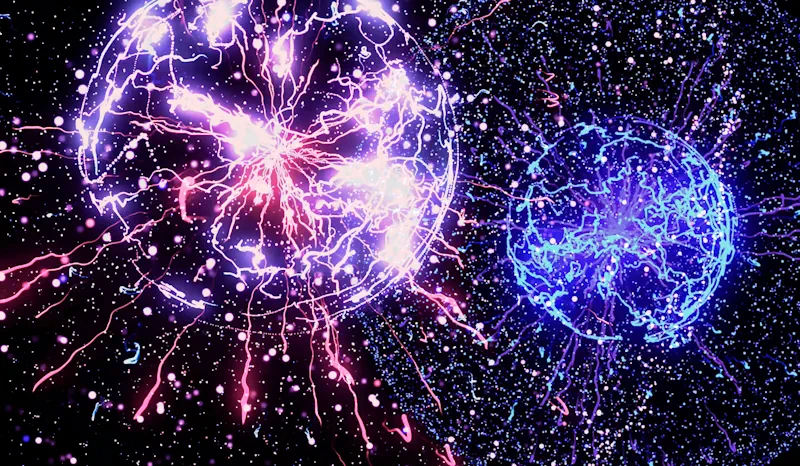
What's In This Article
- Key Highlights
- Introduction
- The Role of Energy Systems in Powerlifting
- Anatomy of the ATP-PC System
- Activation of the ATP-PC Pathway During Powerlifting
- Training Techniques to Optimize the ATP-PC System
- Nutritional Strategies to Support the ATP-PC System
- Measuring the Efficiency of the ATP-PC System in Athletes
- Conclusion
- Frequently Asked Questions
Podingwerlifting Fundamentals: Understan ATP-PC System
Key Highlights
- The ATP-PC pathway is one of the systems used by the body to produce ATP for muscle contraction during powerlifting.
- It is a primary system for short-term, high-intensity activities such as sprinting and resistance training.
- The ATP-PC pathway relies on the breakdown of creatine phosphate to produce ATP.
- Powerlifters can optimize performance by training this system through specific exercises and periodization strategies.
- Nutrition and recovery also play a crucial role in supporting the efficiency of this pathway in powerlifting.
Introduction
Understanding the fundamentals of the ATP-PC system is essential for powerlifters who want to optimize their performance. Powerlifting is a strength sport that involves three main lifts: the squat, bench press, and deadlift. These lifts require a high power output level, which is dependent on the body's energy systems.
The ATP-PC pathway is one of the primary systems used by the body to produce ATP for muscle contraction. ATP is the body's energy currency and is crucial for powering all cellular processes, including muscle contraction.
The system is primarily for short-term, high-intensity activities like sprinting and resistance training. It relies on the breakdown of creatine phosphate to produce ATP. During high-intensity activities, the body rapidly depletes its ATP stores. The body relies on this system to replenish ATP.
Understanding how this system works and how it powers your lifts is essential for maximizing your powerlifting performance. By training this system through specific exercises and implementing periodization and recovery strategies, powerlifters can optimize it and improve their power output.

The Role of Energy Systems in Powerlifting
In powerlifting, the body relies on different energy systems to produce ATP for muscle contraction. The energy system used depends on the intensity and duration of the activity.
The body has three main energy systems: the ATP-PC pathway, anaerobic glycolysis, and the oxidative. The primary energy for short-term, high-intensity activities relies on the breakdown of creatine phosphate to produce ATP through the phosphagen energy system. This is used during explosive activities that last for about 6 seconds and can quickly replenish a small amount of ATP.
Anaerobic glycolysis is another anaerobic pathway that breaks down carbohydrates into glycogen or glucose to resynthesize ATP. This is used for activities lasting up to 2 minutes, depending on the intensity, and is characterized by the production of lactic acid, which can limit its duration.
Oxidative energy, also known as aerobic energy, is the primary source of ATP at rest and during low-intensity activities such as long-distance running and football. It relies on the breakdown of carbohydrates and fats to produce ATP. It is the slowest for ATP production but has the greatest capacity for it. The aerobic energy or oxidative system is activated at the beginning of exercise but becomes predominant after 1 minute. It is the source of ATP for activities lasting longer than 3 minutes, making it a crucial component in powerlifting training.
Powerlifters rely heavily on the ATP-PC system during their lifts, which require short bursts of intense effort. Understanding how the systems work and interact is crucial for optimizing powerlifting performance.
Overview of the ATP-PC System
The body uses the ATP-PC pathway to produce ATP for muscle contraction during high-intensity activities. It relies on the breakdown of creatine phosphate (CP) to resynthesize ATP.
ATP is the body's energy currency and is crucial for powering all cellular processes, including muscle contraction. However, the body only has a limited amount of stored ATP available for immediate use.
It kicks in to provide ATP during high-intensity activities, such as lifting heavy weights or performing explosive movements. Creatine phosphate, stored in the muscles, is broken down to release energy and combines with adenosine diphosphate (ADP) to form ATP.
The ATP-PC system is mainly used for activities lasting up to 6 seconds. It can quickly resynthesize a small number of ATP, making it essential for powerlifters who require short bursts of intense effort.
How the ATP-PC System Powers Your Lifts
The ATP-PC pathway plays a crucial role in powering your lifts during powerlifting. When you lift heavy weights or perform explosive movements, the muscles contract and require much energy.
They provide the necessary energy for muscle contraction during these intense activities. It relies on the breakdown of creatine phosphate (CP) to resynthesize ATP. Creatine phosphate is stored in the muscles and is a high-energy phosphate donor.
When you lift heavy weights, the kicks in to release energy from creatine phosphate and combine it with adenosine diphosphate (ADP) to form ATP. This process provides the immediate energy needed for muscle contraction.
This is particularly important for powerlifters because it allows for the rapid resynthesis of ATP, which is essential for short bursts of intense effort. Powerlifters can improve their power output and performance during lifts by optimizing it's efficiency.
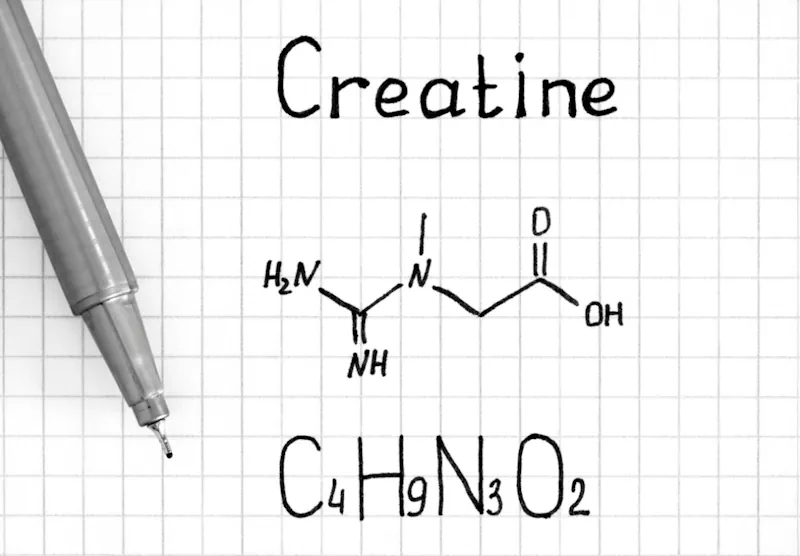
Anatomy of the ATP-PC System
The ATP-PC pathway comprises creatine phosphate (CP), creatine kinase, and adenosine triphosphate (ATP). CP is a high-energy phosphate stored in the muscles and acts as a donor to synthesize ATP. Creatine kinase is an enzyme that catalyzes the reaction between CP and ADP to form ATP.
Components and Function
The components of the ATP-PC system are creatine phosphate (CP), creatine kinase, and adenosine triphosphate (ATP). CP is a high-energy phosphate stored in the muscles and acts as a donor to synthesize ATP.
During high-intensity activities, such as powerlifting, the ATP-PC system relies on the breakdown of CP to release energy. Creatine kinase is an enzyme that catalyzes the reaction between CP and adenosine diphosphate (ADP) to form ATP.
The function of the ATP-PC system is to provide immediate energy for muscle contraction. When the muscles contract during powerlifting, ATP is required for the myosin heads to attach and detach from the actin filaments, allowing movement. The ATP-PC system replenishes ATP stores quickly to meet the demands of powerlifting.
By optimizing the components and function of the ATP-PC system, powerlifters can improve their power output and performance during lifts.
ATP-PC System vs. Other Energy Systems
The ATP-PC pathway Is one of the three used by the body to produce ATP for muscle contraction. It differs from the other pathways, anaerobic glycolysis and oxidative, in several ways:
The primary pathway is for short-term, high-intensity activities. At the same time, anaerobic glycolysis is used for activities lasting up to 2 minutes, and oxidative is used for activities lasting longer than 3 minutes.
Relies on the breakdown of creatine phosphate (CP) to resynthesize ATP. At the same time, anaerobic glycolysis breaks down carbohydrates into glycogen or glucose to resynthesize ATP, and the oxidative breaks down carbohydrates and fats to produce ATP.
Does not require the presence of oxygen, while anaerobic glycolysis and the oxidative rely on the presence of oxygen.
Can rapidly resynthesize a small number of ATP, while anaerobic glycolysis and the oxidative have a slower rate of ATP production but a larger capacity for ATP production.
Understanding the differences between these systems is crucial for powerlifters to optimize their training and performance.
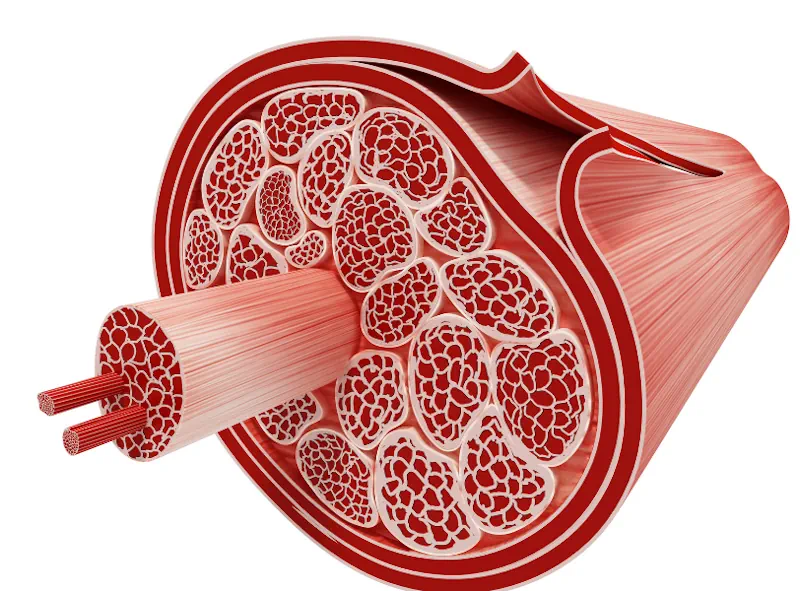
Activation of the ATP-PC Pathway During Powerlifting
The pathway is activated during powerlifting when the muscles contract and require immediate fuel for muscle contraction. Powerlifting involves lifting heavy weights or performing explosive movements, which rely on this system's rapid energy resynthesis. By understanding how this system is activated, powerlifters can design training programs to optimize its efficiency and maintain high exercise intensity throughout their lifts.
Understanding Muscle Fiber Types
Muscle fiber types play a crucial role in activating the ATP-PC during powerlifting. There are two main types of muscle fibers: slow-twitch (Type I) and fast-twitch (Type II).
Slow-twitch fibers are fatigue-resistant and rely primarily on the oxidative pathway for ATP production. These fibers are best suited for endurance activities and have a smaller capacity for rapid ATP production.
Fast-twitch fibers, on the other hand, are divided into two subtypes: Type IIa and Type IIx. Type IIa fibers have a moderate capacity for ATP production and can use anaerobic glycolysis. Type IIx fibers have a high capacity for ATP production and rely primarily on the energy and anaerobic glycolysis.
Powerlifters typically have a higher proportion of fast-twitch fibers, particularly Type IIx fibers, which makes the pathway a primary energy source during their lifts. By understanding the different muscle fiber types, powerlifters can design their training programs to target and optimize the pathway's activation.
Phases of ATP-PC System Activation
The activation of the ATP-PC system during powerlifting can be divided into phases based on the duration and intensity of the activity.
Phase | ATP Production Duration | Energy System |
Phase 1 | Up to 6 seconds | ATP-PC |
Phase 2 | 6 seconds to 30 seconds | ATP-PC and glycolysis |
Phase 3 | 30 seconds to 2 minutes | Glycolysis |
Phase 4 | 2 minutes to 3 minutes | Glycolysis and oxidative |
During phase 1, which lasts up to 6 seconds, the primary energy source is the rapid breakdown of creatine phosphate, providing energy for muscle contraction. As the duration of the activity increases, the body starts to rely more on glycolysis, which involves the breakdown of carbohydrates to resynthesize energy. This shift from phase 1 to glycolysis occurs during phase 2 and continues into phase 3. In phase 4, the oxidative becomes more prominent, providing energy for activities lasting up to 3 minutes.
Understanding the different phases of energy activation can help powerlifters design their training programs and optimize their energy production for different activity durations.

Training Techniques to Optimize the ATP-PC System
Specific training techniques can be implemented to optimize the ATP-PC system for powerlifting.
Specific Exercises for Activation
Powerlifters can incorporate specific exercises into their training regimen to activate and optimize the energy responsible for immediate energy production. These exercises focus on short bursts of high-intensity effort and utilize this energy to provide immediate energy. Some examples include:
Heavy resistance training: Lifting heavy weights at high intensity requires rapid energy resynthesis, making it an excellent way to activate the.
Dynamic effort lifts: Performing explosive movements with lighter weights can activate energy and improve power output.
Plyometrics: Plyometric exercises involve quick, powerful movements that rely on this. Examples include box jumps, depth jumps, and medicine ball throws.
By incorporating these exercises into their training sessions, powerlifters can enhance their energy efficiency and improve their power output during lifts.
Periodization and Recovery Strategies
Periodization and recovery strategies also play a crucial role in optimizing the ATP-PC system in powerlifting. Periodization involves planning and organizing training periods to maximize performance and prevent overtraining. Recovery strategies focus on allowing the body to rest and replenish its energy stores between training sessions.
Periodization strategies:
- Training cycles that prioritize : Creating training cycles centred around intense, explosive movements and brief bursts of high-intensity exertion can maximize efficiency.
- Varying intensity and volume: Balancing high-intensity, low-volume workouts with lower-intensity, higher-volume workouts can help improve their efficiency.
Recovery strategies :
- Allowing sufficient rest between sets: Rest periods of 3 minutes or more allow the body to fully replenish its ATP stores and optimize its efficiency.
- Proper nutrition and hydration: Consuming a balanced diet and staying hydrated are essential for replenishing energy stores.
By implementing periodization and recovery strategies, powerlifters can optimize the activation and efficiency of the ATP-PC system, improving their power output and overall performance.
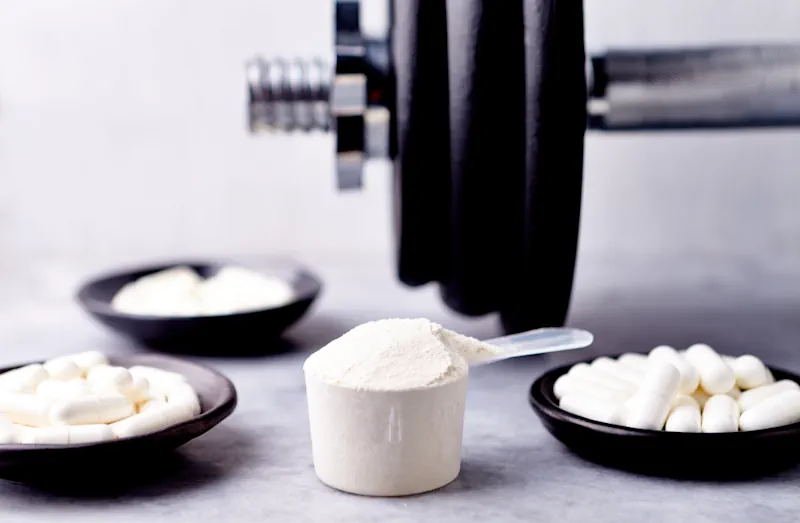
Nutritional Strategies to Support the ATP-PC System
Powerlifters can optimize their energy production and performance by focusing on key nutrients and timing nutrient intake.
Key Nutrients and Supplements
Nutrition for the energy production system should focus on providing the necessary fuel and nutrients.
Creatine: Creatine is a naturally occurring compound that can enhance energy production by increasing the availability of creatine phosphate in the muscles.
Phosphocreatine: Phosphocreatine is a form of creatine that can be taken as a supplement to provide a direct energy source.
Carbohydrates: Carbohydrates are the primary fuel source. Consuming adequate carbohydrates before and after training sessions can help replenish energy stores.
Protein: Protein is essential for muscle repair and growth, supporting overall energy production and performance.
Powerlifters can support efficiency and optimise their energy production by ensuring a balanced diet with sufficient intake of these key nutrients and considering supplementation.
Timing and Quantity of Nutrient Intake
The timing and quantity of nutrient intake are important factors. Powerlifters should consider the following guidelines:
- Nutrient intake before training: Consuming a meal or snack with carbohydrates and protein 2-3 hours before training can provide the necessary fuel. It is also important to stay hydrated before and during training.
- Nutrient intake after training: Consuming a meal or snack with carbohydrates and protein within 30 minutes to 1 hour after training can help replenish ATP stores and support muscle recovery.
- Total calorie intake: Powerlifters should consume sufficient calories to support their energy needs and promote optimal performance. The exact amount will depend on factors such as body weight and training intensity.
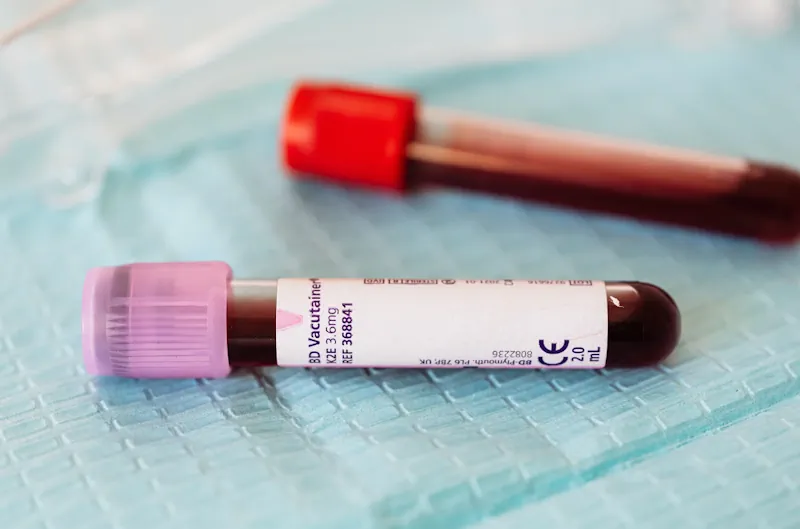
Measuring the Efficiency of the ATP-PC System in Athletes
Measuring the efficiency of athletes can provide valuable insights into their energy production and performance. Various tools and tests can be used for assessment.
Tools and Tests for Assessment
Assessing the efficiency of the ATP-PC system in athletes can be done through various tools and tests. Some common methods include:
- Blood lactate testing: Blood lactate levels can indicate the reliance on the ATP-PC system and the accumulation of lactic acid during intense exercise.
- Wingate test: The Wingate test is a short, high-intensity cycling test that measures anaerobic power and capacity, providing an indication of efficiency.
- Isokinetic dynamometer testing: Isokinetic dynamometers can assess muscle strength and power output, providing insights into activation during specific movements.
By using these tools and tests, coaches and athletes can assess the efficiency of the ATP-PC system and make appropriate training adjustments to optimize performance.
Interpreting the Results for Training Adjustments
Interpreting the results of ATP-PC assessments can guide training adjustments to optimize powerlifting performance. The results can provide insights into the efficiency of energy production and fuel utilization.
For example, if blood lactate levels are consistently high during intense exercise, it may indicate a reliance on the glycolytic system rather than ATP-PC. Training volume, intensity, and rest periods can be adjusted to promote ATP-PC activation.
Similarly, isokinetic dynamometer testing can reveal specific weaknesses or imbalances in muscle strength and power output. Targeted exercises and training strategies can be implemented to address these areas and improve ATP-PC efficiency.
By interpreting the results of ATP-PC assessments, powerlifters and coaches can make informed training adjustments to optimize energy production and improve powerlifting performance.
Conclusion
Understanding the energy crucial for optimizing powerlifting performance. The intricate interplay between energy and muscle fibers determines the effectiveness of your lifts. Powerlifters can enhance their strength and endurance by incorporating specific exercises, periodization, and nutritional strategies tailored to support this. Consistent training, proper recovery, and strategic nutrient intake play pivotal roles in maximizing the efficiency of this energy. Monitoring and assessing its performance is essential for making informed training adjustments. By delving into the nuances of this, powerlifters can elevate their training regime and achieve peak athletic performance.
Frequently Asked Questions
How long does it take for the ATP-PC system to recover?
The ATP-PC system can recover within 3 minutes of rest. During this time, the body replenishes its ATP stores and prepares for the next burst of high-intensity activity.
Can you train the ATP-PC system every day?
Training the ATP-PC system daily is not recommended as it requires sufficient rest and recovery to replenish ATP stores. Adequate rest periods between training sessions allow for optimal ATP-PC system activation.
What are common misconceptions about the ATP-PC system in powerlifting?
Common misconceptions about the ATP-PC system in powerlifting include thinking it is the only energy system that can provide energy for prolonged activities. Understanding the role of other energy systems and their contributions to powerlifting performance is important.
How does understanding the ATP-PC system benefit powerlifters?
Understanding the ATP-PC system benefits powerlifters by allowing them to optimize their training and performance. Powerlifters can improve their power output and overall performance by targeting the ATP-PC system through specific exercises and periodization strategies.
Are there specific training techniques that target the ATP-PC system?
Specific training techniques such as heavy resistance training, dynamic effort lifts, and plyometrics can target the ATP-PC system. These exercises focus on short bursts of high-intensity effort and activate the ATP-PC system.
How can nutrition and recovery impact the efficiency of the ATP-PC system in powerlifting?
Proper nutrition and recovery play a crucial role in supporting the efficiency of the ATP-PC system in powerlifting. Adequate nutrient intake and hydration before and after training sessions can replenish ATP stores and support muscle recovery.